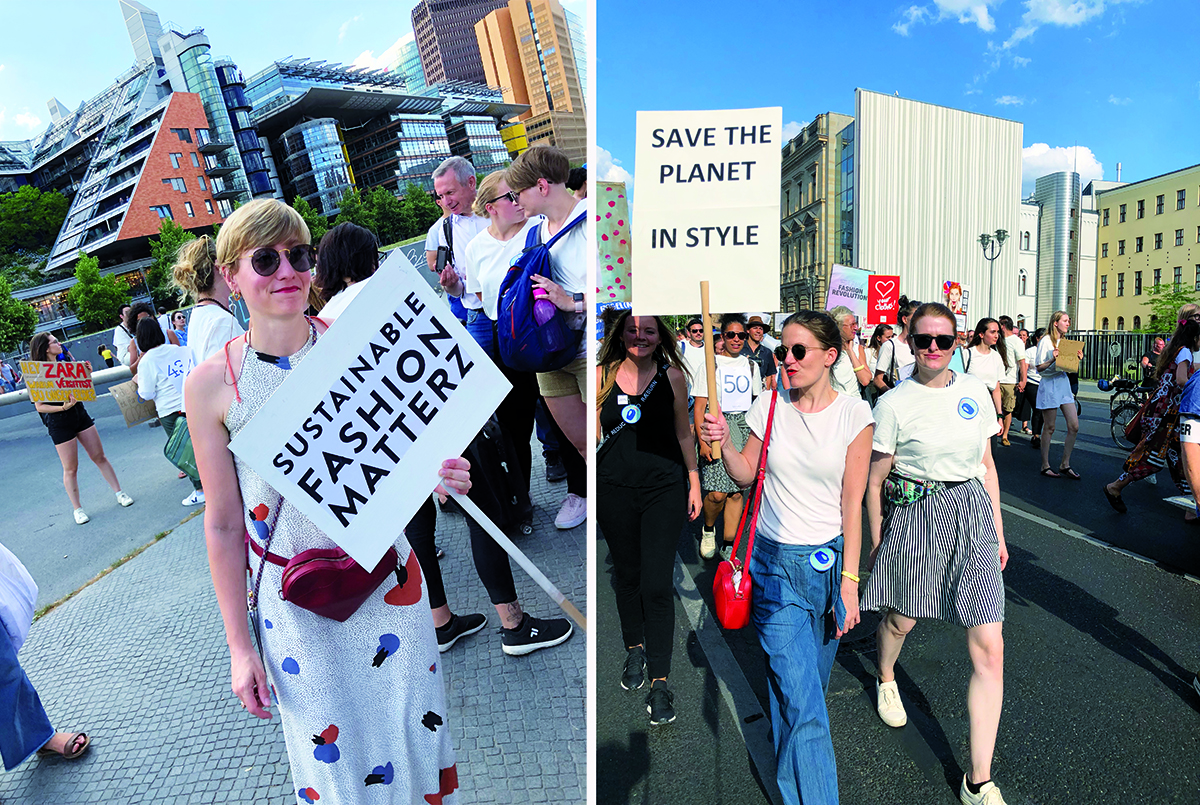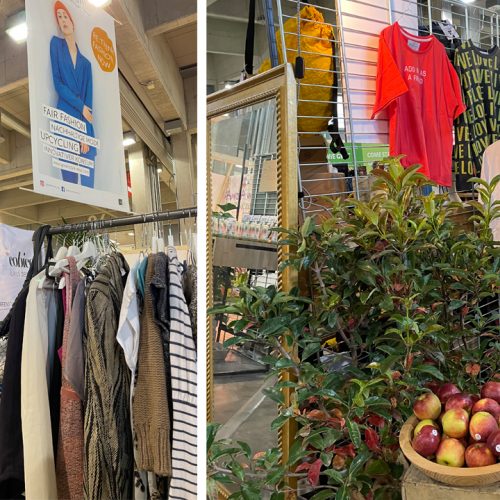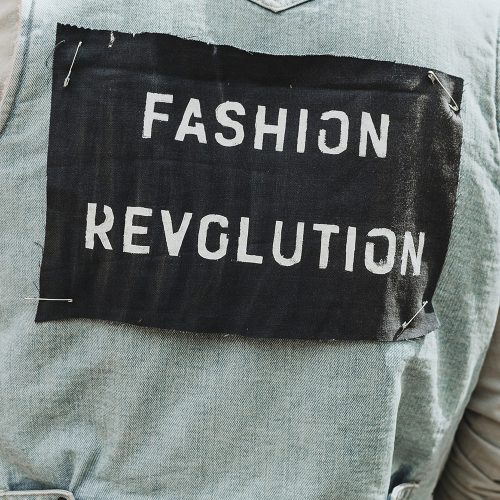FAST FASHION FACTS
From the first moment of production to the disposal, fast fashion has an immense influence on the climate. The textile industry is the second greatest environmental polluter: Soils are polluted and rendered useless through the pesticides used in cotton cultivation. Rivers and seas are polluted by the waste water from dyeing processes. Want numbers? We are talking about 20 percent of the world’s industrial water pollution.
„BAD news:
Fast Fashion is killing the climate.“
60 percent of all garments contain polyester, which in form of microplastics threaten ocean wildlife. From 8.3 million tons of polyester in 2000, the use of polyester has increased to approximately 21.3 million tons (157 percent) in 2016. Bad news: Jeans are the dirtiest garments of all. At least 7,000 liters of water are needed to produce a pair of jeans – not to mention the chemicals. The list goes on.
„BAD news: This list
…could carry on without end.“
But what does that have to do with us? It has a lot to do with us because our consumer behavior has a very big impact on this issue: sales of clothing almost doubled between 2002 and 2015. German consumers buy an average of 60 garments per year. But clothes are worn for only half as long as 15 years ago. The rest ends up (often unworn) in now overflowing landfills. Recycling? Yes, but even that is limited. We simply produce and consume too much.
„ACT NOW: Because climate concerns us all.””
You don’t have to be an activist to set an example. This is about awareness, about appreciation, about the will to change your behavior. And every little step counts. It can be done with small things and in everyday life. Here are some tips that anyone can put into practice:
Read labels
Labels provide the most important information about the fabrics. Organic cotton, Modal, Piñatex or Appleskin are some of the natural materials that are kind to the skin and nature. Certified materials such as GOTS, OEKO-TEX® certify that no toxic chemicals have been used. Also be sure to check information about production on the website.
Quality instead of quantity
High-quality, timeless clothing remains in the cycle longer than cheap, fast trend parts.
Repairing fashion
Sew on buttons, repair the trouser hem – if you can’t do it yourself, go to the nearest tailor. Works great too: the odd older lady (check Kleinanzeigen or nachbarn.de) is happy to receive extra money. Some brands like Nudie Jeans offer a (free!) life-long repair service. Important: Textiles do NOT belong in the garbage!
Buy used fashion
It doesn’t always have to be new – vintage and second-hand shops are real treasure chests for grateful buyers looking for unusual pieces and well-preserved classics. Advantage: These garments and accessories stay in circulation longer.
Swap fashion
Former favorite pieces find enthusiastic buyers at private or public swap parties without the need for new resources. Good to know: Fashion Revolution Week 2020 plans to throw the biggest clothing exchange party in history.
Rent fashion
Borrowing clothes reduces the ecological footprint by 70 percent. New styling inspirations and cleaner wardrobe included. Try it out now at Stay Awhile and Unown.
Washing
What also needs to be considered is that part of the ecological footprint originates with the consumer. Among other things, this is due to incorrect washing and outdated washing habits.
Small laundry 1×1: Do not wash clothes more often than necessary. +++ Use biodegradable detergent. +++ Dose detergent exactly. +++ At a washing temperature of 30°C instead of 60°C, 50 percent energy is saved. +++ Air drying instead of dryer drying +++ Hanging instead of ironing (if possible). +++ If professional textile cleaning is necessary, ask for environmentally friendly solvents.
Good to know: Washing balls replace or at least reduce the amount of detergent can be used to help keep the water cleaner. Clothing bags (e.g. Guppy Friend) collect the microplastic in synthetic fabrics.
Text: Elisa Gianna Gerlach









